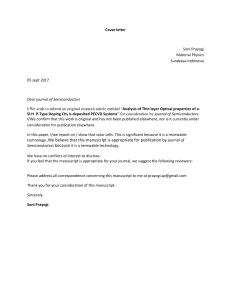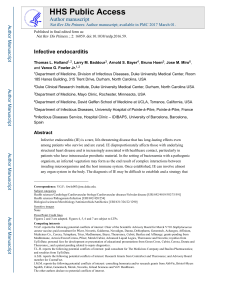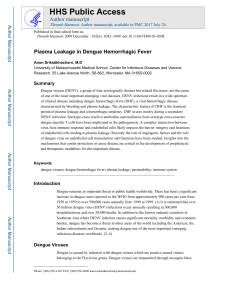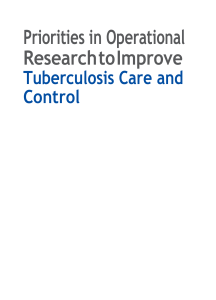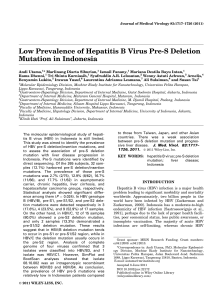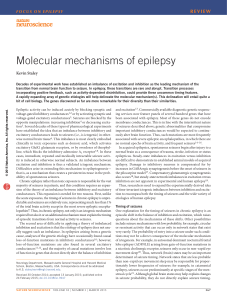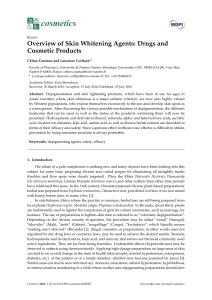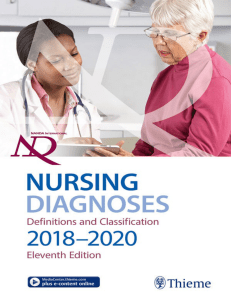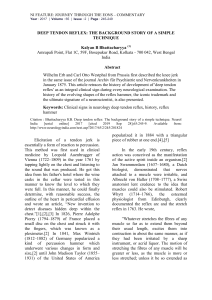Uploaded by
Muhammad AL Qarni
Rett Syndrome: Revised Diagnostic Criteria & Nomenclature
advertisement
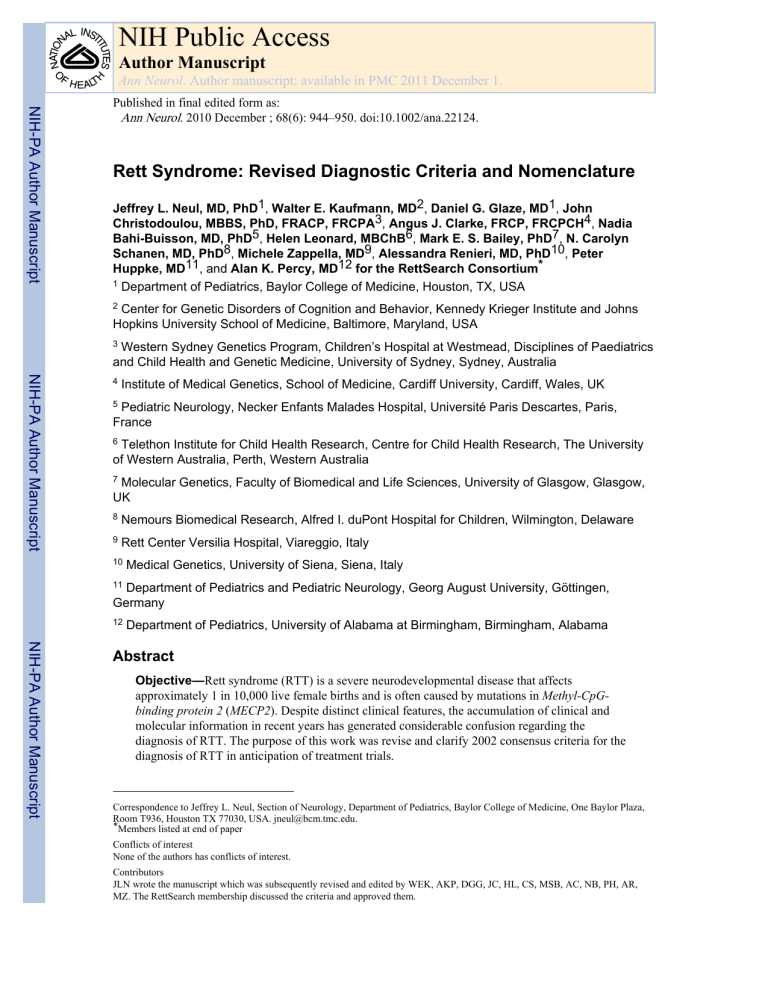
NIH Public Access Author Manuscript Ann Neurol. Author manuscript; available in PMC 2011 December 1. NIH-PA Author Manuscript Published in final edited form as: Ann Neurol. 2010 December ; 68(6): 944–950. doi:10.1002/ana.22124. Rett Syndrome: Revised Diagnostic Criteria and Nomenclature Jeffrey L. Neul, MD, PhD1, Walter E. Kaufmann, MD2, Daniel G. Glaze, MD1, John Christodoulou, MBBS, PhD, FRACP, FRCPA3, Angus J. Clarke, FRCP, FRCPCH4, Nadia Bahi-Buisson, MD, PhD5, Helen Leonard, MBChB6, Mark E. S. Bailey, PhD7, N. Carolyn Schanen, MD, PhD8, Michele Zappella, MD9, Alessandra Renieri, MD, PhD10, Peter Huppke, MD11, and Alan K. Percy, MD12 for the RettSearch Consortium* 1 Department of Pediatrics, Baylor College of Medicine, Houston, TX, USA 2 Center for Genetic Disorders of Cognition and Behavior, Kennedy Krieger Institute and Johns Hopkins University School of Medicine, Baltimore, Maryland, USA 3 Western Sydney Genetics Program, Children’s Hospital at Westmead, Disciplines of Paediatrics and Child Health and Genetic Medicine, University of Sydney, Sydney, Australia NIH-PA Author Manuscript 4 Institute of Medical Genetics, School of Medicine, Cardiff University, Cardiff, Wales, UK 5 Pediatric Neurology, Necker Enfants Malades Hospital, Université Paris Descartes, Paris, France 6 Telethon Institute for Child Health Research, Centre for Child Health Research, The University of Western Australia, Perth, Western Australia 7 Molecular Genetics, Faculty of Biomedical and Life Sciences, University of Glasgow, Glasgow, UK 8 Nemours Biomedical Research, Alfred I. duPont Hospital for Children, Wilmington, Delaware 9 Rett Center Versilia Hospital, Viareggio, Italy 10 Medical Genetics, University of Siena, Siena, Italy 11 Department of Pediatrics and Pediatric Neurology, Georg August University, Göttingen, Germany 12 Department of Pediatrics, University of Alabama at Birmingham, Birmingham, Alabama NIH-PA Author Manuscript Abstract Objective—Rett syndrome (RTT) is a severe neurodevelopmental disease that affects approximately 1 in 10,000 live female births and is often caused by mutations in Methyl-CpGbinding protein 2 (MECP2). Despite distinct clinical features, the accumulation of clinical and molecular information in recent years has generated considerable confusion regarding the diagnosis of RTT. The purpose of this work was revise and clarify 2002 consensus criteria for the diagnosis of RTT in anticipation of treatment trials. Correspondence to Jeffrey L. Neul, Section of Neurology, Department of Pediatrics, Baylor College of Medicine, One Baylor Plaza, Room T936, Houston TX 77030, USA. [email protected]. *Members listed at end of paper Conflicts of interest None of the authors has conflicts of interest. Contributors JLN wrote the manuscript which was subsequently revised and edited by WEK, AKP, DGG, JC, HL, CS, MSB, AC, NB, PH, AR, MZ. The RettSearch membership discussed the criteria and approved them. Neul et al. Page 2 NIH-PA Author Manuscript Method—RettSearch members, representing the majority of the international clinical RTT specialists, participated in an iterative process to come to a consensus on a revised and simplified clinical diagnostic criteria for RTT. Results—The clinical criteria required for the diagnosis of classic and atypical RTT were clarified and simplified. Guidelines for the diagnosis and molecular evaluation of specific variant forms of RTT were developed. Interpretation—These revised criteria provide clarity regarding the key features required for the diagnosis of RTT and reinforce the concept that RTT is a clinical diagnosis based on distinct clinical criteria, independent of molecular findings. We recommend that these criteria and guidelines be utilized in any proposed clinical research. Introduction NIH-PA Author Manuscript Rett Syndrome (RTT, MIM 312750), an X-linked neurodevelopmental condition characterized by loss of spoken language and hand use with the development of distinctive hand stereotypies, was originally described in the 1960’s by Andreas Rett1. In a seminal paper Bengt Hagberg and colleagues characterized the specific clinical features and initiated the eponym by which we recognize this clinical condition2. The clinical diagnosis has been based on consensus clinical criteria3, which have been modified slightly over time to reflect increased understanding of the disease features, but have retained certain key clinical elements to make the diagnosis of classic, or typical, RTT. In addition to typical RTT, it has been recognized that some individuals present with many of the clinical features of RTT, such as regression, but do not necessarily have all of the features of the disorder. These have been termed “variant” or “atypical” RTT and have been found to cluster in some distinct clinical groupings, such as preserved speech variant, early seizure variant, and congenital variant4. In 1999, Amir and colleagues discovered that mutations in the gene encoding Methyl-CpGbinding protein 2 (MECP2) are associated both with rare familial cases of RTT as well as with the more common sporadic occurrences of typical RTT5. Using a battery of modern mutation detection assays, mutations in MECP2 can be found in 95–97% of individuals with typical RTT6. Importantly, even using the best methodologies, 3–5% of individuals who strictly meet clinical criteria for RTT do not have an identified mutation in MECP2, indicating that a mutation in this gene is not required to make the diagnosis of typical RTT6. The situation is more dramatic in atypical cases, with only 50–70% having identified mutations in MECP27. NIH-PA Author Manuscript In addition to RTT, mutations in MECP2 have also been identified in individuals who do not have the clinical features of RTT. At one end of the extreme are the asymptomatic female carriers found in familial RTT8. The majority of these individuals have extreme skewing of their X chromosome inactivation (XCI), allowing a normal presentation. At the opposite extreme are boys with MECP2 mutations known to cause typical RTT in girls, but presenting with severe early postnatal encephalopathy, early death, and absence of the distinctive clinical features of RTT8, 9. In addition to this early encephalopathy, rare individuals with mutations in MECP2 who present with other neurodevelopmental conditions such as autism10, Angelman syndrome-like presentation11, and non-specific intellectual disability have been described. Although these individuals have some form of cognitive impairment, they lack features that define RTT, most importantly a history of regression, and therefore cannot be given a diagnosis of RTT. These clinical phenotypes emphasize that mutations in MECP2 are not synonymous with RTT and that a mutation in MECP2 is not sufficient to make the diagnosis of RTT. Because MECP2 mutations are Ann Neurol. Author manuscript; available in PMC 2011 December 1. Neul et al. Page 3 neither necessary nor sufficient to make the diagnosis of RTT, RTT remains a clinical diagnosis. NIH-PA Author Manuscript Mutations in loci other than MECP2 have also been found in individuals that have been labeled as atypical RTT, although the criteria utilized have not always been clear. For example, mutations in CDKL5 have been found in individuals with what has been characterized as early-seizure onset variant of RTT12, However, the increasing identification of individuals with CDKL5 mutations has led to the observation that these individuals lack some of the distinctive clinical features of RTT such as the clear period of regression and the characteristic intense eye-gaze seen in individuals with typical RTT12. Similarly, recent reports have identified mutations in FOXG1 in individuals characterized as having the congenital variant of RTT13, however it is not clear that applying a diagnosis of RTT is entirely appropriate because they do not have a clear history of regression. NIH-PA Author Manuscript To address some of the confusion that currently exists regarding the diagnosis of RTT, the RettSearch Consortium participated in an iterative process to come to a consensus on revised and simplified diagnostic criteria for RTT. RettSearch is an international network of clinically-oriented Rett syndrome researchers, composed of experts in RTT from thirteen different countries, which was initially established in 2006 through a meeting grant from the National Institutes of Health and additional support from the International Rett Syndrome Association (IRSA). Currently, it is supported by the International Rett Syndrome Foundation (IRSF), an organization which emerged in 2007 from the merge of IRSA and the Rett Syndrome Research Fund (RSRF). RettSearch’s mission has been to promote the development of new therapeutic approaches for RTT by collecting information and pursuing collaborative research in areas of relevance to clinical trials in RTT. RettSearch has become the authoritative body regarding clinical matters in RTT and, in such capacity, it conducted the process of reviewing the diagnostic criteria for RTT. Revised clinical criteria for typical RTT NIH-PA Author Manuscript The previous criteria of 2002 had eight necessary criteria, five exclusion criteria, and eight supportive criteria3. The requirement for those criteria was never explicitly stated and one of the necessary criteria (postnatal deceleration of head growth in majority) was not absolutely required; furthermore, there was no requirement for any of the supportive criteria. Observations such as these may be contributing to the diagnostic confusion we have noted. We developed revised diagnostic criteria (table 1) to clarify and simplify the diagnosis of typical, or classic, RTT. We limited the necessary criteria to the presence of regression plus four main criteria that are absolutely required for the diagnosis of typical RTT. The clinical picture associated with typical RTT is defined by a regression of purposeful hand use and spoken language, with the development of gait abnormalities and hand stereotypies. After the period of regression, a stage of stabilization and potentially even improvement ensues, with some individuals partially regaining skills. This potential for some skill recovery emphasizes the importance of the acquisition of a careful history to determine the presence of regression. We eliminated post-natal deceleration in head growth from the necessary criteria because this feature in not found in all individuals with typical RTT14. However, because it is a clinical feature that can alert a clinician to the potential diagnosis and it is a distinctive feature in the disorder, we have included this as a preamble to the criteria as a feature that should raise suspicion for the diagnosis. The basic purpose of the exclusion criteria as written in the 2002 criteria was to exclude other potential causes of neurological disease, such as prematurity leading to intraventricular hemorrhage, or perinatal meningitis leading to diffuse brain damage. We have thus streamlined this exclusion to a single statement that is meant to cover any other primary Ann Neurol. Author manuscript; available in PMC 2011 December 1. Neul et al. Page 4 NIH-PA Author Manuscript cause of neurological dysfunction. There have been reports of individuals who have all the clinical features of typical RTT and disease-causing mutations in MECP2 but also have potential causes of neurological dysfunction, such as trisomy 2115. These cases should not be classified as typical RTT because the diagnosis of typical RTT suggests a particular disease onset and course, which may be exacerbated by other confounding etiological entities. Rather they should be considered an atypical form of RTT if they otherwise meet the consensus criteria (vide infra). The other exclusion criteria reflect the recognition that individuals with typical RTT do not have gross deviations in normal development in the first six months of life. Although it has been recognized that some alterations in initial development can be present in these individuals16 typically the family and the primary clinician is not concerned about development until after six months of life. This is in contrast to one of the atypical forms of RTT, termed the congenital variant, in which development is grossly abnormal from birth. Individuals who have such a developmental pattern should thus be evaluated using the atypical RTT criteria and given the diagnosis of atypical RTT-congenital form if they fulfill these criteria. NIH-PA Author Manuscript The supportive criteria have been entirely eliminated from the diagnostic criteria for typical RTT because they are not required to make the diagnosis. However, in recognition that many clinicians and importantly therapists and teachers sometimes suspect children as having RTT and refer them for detailed evaluation based on the presence of some key suggestive clinical features such as slowing in the rate of head growth, breathing abnormalities, and the intensive “Rett gaze” used for communication, they remain in the criteria for atypical RTT which are listed in the same table as the criteria for typical RTT (table 1). In these new criteria, history of regression and ALL of the necessary and exclusion criteria MUST be met to make the diagnosis of typical RTT, without exception. Of note, although initially recognized only in girls, boys who meet the criteria for typical RTT have been identified17 and thus should be considered to have typical RTT. Recent work (See accompanying paper by Percy et al.) compared the diagnosis of a large cohort of individuals using the 2002 criteria with the diagnosis that will be applied to these same individuals using these revised criteria and found concordance between the two diagnostic criteria, validating these revised criteria. Revised clinical criteria for atypical variants of RTT NIH-PA Author Manuscript Although the 2002 report also put forth distinct criteria for assigning the diagnosis of variant RTT3, it is not clear that these guidelines have been followed precisely when making the diagnosis of variant, also known as atypical, RTT. In the 2002 report, three of six main criteria were required for the diagnosis. Inspection of the six main criteria reveals that four mention regression (absence or reduction of hand skills, reduction or loss of babble speech, reduction or loss of communication, Rett syndrome disease profile with a period of regression followed by recovery). Thus, some form of regression is required for the diagnosis of atypical RTT. The importance of regression for the diagnosis of RTT has long been recognized as demonstrated by a statement by Francoise Goutieres and Jean Aicardi in a paper from 1986 “The absence of normal initial development, followed by secondary deterioration and of loss of previously acquired voluntary hand grasp is especially important, as it is one of the essential traits of R(ett) S(yndrome)”18. However, recent reports have diagnosed individuals with “atypical RTT” in the absence of any clear regression19. Many of the individuals in these reports have been found to have mutations in other loci and are increasingly recognized as having clinical features distinct from RTT13, 20, 21. which serves to emphasize the importance of regression in the diagnosis of RTT. Therefore, in these revised criteria, in contrast to a recent report that did not emphasize regression in the Ann Neurol. Author manuscript; available in PMC 2011 December 1. Neul et al. Page 5 NIH-PA Author Manuscript diagnosis19, we state that for the diagnosis of atypical RTT an individual MUST have a period of regression followed by recovery or stabilization. This clearly distinguishes these cases from relentless degenerative conditions. In addition to having a regression, individuals must have at least two of the four main criteria and five of eleven supportive criteria. Specific variant forms of atypical RTT A variety of specifically defined variant forms of RTT have been recognized that have distinct clinical features. Some of these forms have been recognized in only a small number of cases, making it difficult to make any clear statement concerning the defining clinical features. However, multiple cases have been described for three distinct variant forms of RTT: the preserved speech variant22, the congenital variant23, and the early seizure variant24. The preserved speech variant is the best characterized, has well defined clinical features, and mutations in MECP2 have been found in the majority of cases25. This is in contrast to both the congenital and the early seizure variant, in which mutations in MECP2 have only rarely been identified20, 21. Recent work has found mutations in different loci associated with these variant forms, with mutations in CDKL5 found in early seizure variant cases12 and mutations in FOXG1 found in congenital variant cases13. Figure 1 shows the clinical features and the genetic loci associated with these specific variants of atypical RTT. It should be noted that a diagnosis of one of these variants of RTT still requires the criteria stated above for atypical RTT to be meet. NIH-PA Author Manuscript Characterization of individuals with RTT and/or with MECP2 mutations NIH-PA Author Manuscript With the recognition that the presence of a MECP2 mutation is not sufficient for the diagnosis of RTT, the question remains of how to categorize and describe individuals with MECP2 mutations who do not have the clinical features of RTT. We propose that all individuals with clinical disorders and MECP2 mutations be called MECP2-related disorders, which includes RTT and other neurological conditions associated with MECP2 mutations. Those individuals with the clinical features required for the diagnosis of RTT should be referred to as having either typical or atypical RTT with mention of the genetic mutation identified. For example, an individual might have typical RTT features with a disease causing mutation in MECP2. This system would work for mutations in other loci. For example, a clinical condition might be described as atypical RTT (early seizure variant) with a pathogenic mutation in CDKL5. For those individuals without RTT, the underlying clinical condition should be referred to and then the presence of a MECP2 mutation mentioned. For example, those rare individuals with autism associated with a MECP2 mutation would be diagnosed as Autism with MECP2 mutation. This nomenclature extends to individuals with duplications of the MECP2 locus who should be referred to by their clinical condition (i.e., autism, intellectually disabled, etc.) with a MECP2 duplication. Research study recommendations A variety of clinical trials in RTT are currently underway or imminent. We feel it is important that clinical trials and other research studies utilize a basic set of guiding principles in regards to disease classification. First, all individuals should be carefully assessed and classified clinically according to the revised clinical criteria. The clinical diagnosis for all participants should be clearly stated in any publication. Second, thorough and complete genetic testing for mutations in MECP2 should be performed on all participants. This would include sequencing of the coding region as well as methods such as MLPA, quantitative PCR, microarray methods, or Southern blotting to detect large DNA rearrangements. Again, all genotype information should be provided in publications. Because both clinical diagnosis and specific genetic mutations can modulate disease severity Ann Neurol. Author manuscript; available in PMC 2011 December 1. Neul et al. Page 6 NIH-PA Author Manuscript and associated clinical problems, we feel it is important that study design and data analysis account for these sources of variation. These recommendations do not prohibit individuals with clinically definite typical RTT without a MECP2 mutation from participation, nor do they exclude those individuals with MECP2 mutations and a clinical condition distinct from RTT. Rather, these recommendations advise that analysis be performed in a manner to minimize clinical and genetic heterogeneity. Nomenclature recommendations Some have proposed the use of Rett Disorder to characterize individuals with Rett Syndrome who have mutations in MECP2. This classification scheme creates confusion for the non-expert and should be avoided. The term “Rett Syndrome, Typical” or “Rett Syndrome, Atypical” is preferred, with additional reference to the presence or absence of a MECP2 mutation. There is variation in the abbreviation used for the clinical condition of Rett Syndrome. We recommend the use of RTT and discourage the use of RS. The rationale for this is firstly that this is the nomenclature given in Online Medelian Inheritence in Man OMIM (http://www.ncbi.nlm.nih.gov/omim/), which has long been a standard reference for the nomenclature of genetic disorders; and secondly, the abbreviation RS can be confused with RS1, which is the accepted abbreviation for Retinoschisis 1, OMIM # 312700. Additional nomenclature issues NIH-PA Author Manuscript Human gene: MECP2 (www.genenames.org/data/hgnc_data.php?hgnc_id=6990) Human protein: MeCP2 (www.uniprot.org/uniprot/P51608) Mouse gene: Mecp2 Mouse protein: Mecp2 MECP2_e1 = mRNA isoform that has its translational start site in exon 1 MECP2_e2 = mRNA isoform that has its translational start site in exon 2 Similarly, MeCP2_e1 or MeCP2_e2 for the protein isoform made from each mRNA isoform When naming specific sequence variations, it is important to use a standardized terminology. We recommend the following nomenclature: g. for genomic sequence (e.g., g.76A>T) NIH-PA Author Manuscript c. for cDNA sequence (e.g., c.473C>T) p. for protein sequence (e.g., p.Thr158Met – avoid 1 letter codes) r. for RNA sequence (e.g., r.76a>u) m. for mitochondrial DNA sequence (e.g., m.8993T>C) For additional recommendations regarding how to identify specific sequence variations, refer to the Human Genome Variation Society’s website on Nomenclature for the description of sequence variations (http://www.hgvs.org/mutnomen/). RTT and MECP2 locus specific databases: 1. RettBASE (http://mecp2.chw.edu.au/) 2. EuroRETT (http://www.eurorett.eu/) Ann Neurol. Author manuscript; available in PMC 2011 December 1. Neul et al. Page 7 NIH-PA Author Manuscript 3. InterRett (https://interrett.ichr.uwa.edu.au//?q=/rett/irsa/) 4. Genetica Medica (http://www.biobank.unisi.it/Elencorett.asp) 5. MeCP2.org.uk (http://www.mecp2.org.uk/) Conclusions NIH-PA Author Manuscript With the expansion of knowledge related to RTT and MECP2, reconsideration of diagnostic criteria for RTT and its variants and for other disorders that have been linked with RTT is warranted. More than ten years after association of MECP2 mutations with RTT, the recommendations proposed above should clarify and refine clinical diagnoses and provide a framework for RTT-related conditions. Strengths of these criteria are that they represent expert consensus opinion regarding the diagnosis and clinical categorization of RTT which have been validated using a large cohort of individuals with RTT (See accompanying paper by Percy et al.). Beyond its utility in clinical management, the utilization of these criteria will ensure a high degree of homogeneity in populations enrolled in treatment trials and other clinical studies. One potential weakness of any revised criteria such as this is the possibility that some individuals may be inappropriately included or excluded from the diagnosis. For this reason, the RettSearch community is commited to a process of continuous re-evaluation of these criteria, using the large clinical populations and datasets available to the membership, to ensure that the criteria are serving the stated purpose of providing a streamlined diagnostic framework that captures the clinical population of interest. We recommend that these criteria and guidelines be utilized in any future clinical practice and research. Acknowledgments We thank the International Rett Syndrome Foundation (IRSF) for its continuous support of the RettSearch consortium (www.rettsearch.org). The establishment of RettSearch was also supported by NIH grant R13 HD 48152. We are also grateful to the children affected by RTT and their families, who are our constant inspiration. Role of the funding source No role in the design, analysis, interpretation, preparation, or decision to publish. References NIH-PA Author Manuscript 1. Rett A. On a unusual brain atrophy syndrome in hyperammonemia in childhood. Wien Med Wochenschr. 1966; 116:723–726. [PubMed: 5300597] 2. Hagberg B, Aicardi J, Dias K, Ramos O. A progressive syndrome of autism, dementia, ataxia, and loss of purposeful hand use in girls: Rett’s syndrome: report of 35 cases. Ann Neurol. 1983; 14:471–479. [PubMed: 6638958] 3. Hagberg B, Hanefeld F, Percy A, Skjeldal O. An update on clinically applicable diagnostic criteria in Rett syndrome. Comments to Rett Syndrome Clinical Criteria Consensus Panel Satellite to European Paediatric Neurology Society Meeting, Baden Baden, Germany, 11 September 2001. Eur J Paediatr Neurol. 2002; 6:293–297. [PubMed: 12378695] 4. Hagberg BA, Skjeldal OH. Rett variants: a suggested model for inclusion criteria. Pediatr Neurol. 1994; 11:5–11. [PubMed: 7986294] 5. Amir RE, Van den Veyver IB, Wan M, et al. Rett syndrome is caused by mutations in X-linked MECP2, encoding methyl-CpG-binding protein 2. Nat Genet. 1999; 23:185–188. [PubMed: 10508514] 6. Neul JL, Fang P, Barrish J, et al. Specific mutations in methyl-CpG-binding protein 2 confer different severity in Rett syndrome. Neurology. 2008; 70:1313–1321. [PubMed: 18337588] 7. Percy AK, Lane JB, Childers J, et al. Rett syndrome: North American database. J Child Neurol. 2007; 22:1338–1341. [PubMed: 18174548] Ann Neurol. Author manuscript; available in PMC 2011 December 1. Neul et al. Page 8 NIH-PA Author Manuscript NIH-PA Author Manuscript 8. Wan M, Lee SS, Zhang X, et al. Rett syndrome and beyond: recurrent spontaneous and familial MECP2 mutations at CpG hotspots. Am J Hum Genet. 1999; 65:1520–1529. [PubMed: 10577905] 9. Kankirawatana P, Leonard H, Ellaway C, et al. Early progressive encephalopathy in boys and MECP2 mutations. Neurology. 2006; 67:164–166. [PubMed: 16832102] 10. Carney RM, Wolpert CM, Ravan SA, et al. Identification of MeCP2 mutations in a series of females with autistic disorder. Pediatr Neurol. 2003; 28:205–211. [PubMed: 12770674] 11. Watson P, Black G, Ramsden S, et al. Angelman syndrome phenotype associated with mutations in MECP2, a gene encoding a methyl CpG binding protein. J Med Genet. 2001; 38:224–228. [PubMed: 11283202] 12. Bahi-Buisson N, Nectoux J, Rosas-Vargas H, et al. Key clinical features to identify girls with CDKL5 mutations. Brain. 2008 13. Ariani F, Hayek G, Rondinella D, et al. FOXG1 is responsible for the congenital variant of Rett syndrome. Am J Hum Genet. 2008; 83:89–93. [PubMed: 18571142] 14. Hagberg G, Stenbom Y, Witt Engerstrom I. Head growth in Rett syndrome. Acta Paediatr. 2000; 89:198–202. [PubMed: 10709891] 15. Leonard H, Weaving L, Eastaugh P, et al. Trisomy 21 and Rett syndrome: a double burden. J Paediatr Child Health. 2004; 40:406–409. [PubMed: 15228575] 16. Einspieler C, Kerr AM, Prechtl HF. Abnormal general movements in girls with Rett disorder: the first four months of life. Brain Dev. 2005; 27 (Suppl 1):S8–S13. [PubMed: 16182501] 17. Christen HJ, Hanefeld F. Male Rett variant. Neuropediatrics. 1995; 26:81–82. [PubMed: 7566459] 18. Goutieres F, Aicardi J. Atypical forms of Rett syndrome. Am J Med Genet Suppl. 1986; 1:183– 194. [PubMed: 3087180] 19. Artuso R, Mencarelli MA, Polli R, et al. Early-onset seizure variant of Rett syndrome: Definition of the clinical diagnostic criteria. Brain Dev. 2009 20. Huppke P, Laccone F, Kramer N, et al. Rett syndrome: analysis of MECP2 and clinical characterization of 31 patients. Hum Mol Genet. 2000; 9:1369–1375. [PubMed: 10814718] 21. Archer HL, Evans J, Edwards S, et al. CDKL5 mutations cause infantile spasms, early onset seizures, and severe mental retardation in female patients. J Med Genet. 2006; 43:729–734. [PubMed: 16611748] 22. Zappella M. The Rett girls with preserved speech. Brain Dev. 1992; 14:98–101. [PubMed: 1621933] 23. Rolando S. Rett syndrome: report of eight cases. Brain Dev. 1985; 7:290–296. [PubMed: 4061760] 24. Hanefeld F. The clinical pattern of the Rett syndrome. Brain Dev. 1985; 7:320–325. [PubMed: 4061766] 25. Renieri A, Mari F, Mencarelli MA, et al. Diagnostic criteria for the Zappella variant of Rett syndrome (the preserved speech variant). Brain Dev. 2008 RettSearch Consortium Members NIH-PA Author Manuscript Executive Committee: Walter Kaufmann (Kennedy Krieger Institute, Baltimore, MD, USA), Jeffrey Neul, Daniel Glaze (Baylor College of Medicine, Houston, TX, USA), John Christodoulou (Children’s Hospital at Westmead, Sydney, Australia), Helen Leonard (Telethon Institute for Child Health Research, The University of Western Australia, West Perth, Western Australia), Laurent Villard (Medicine of Marseille, Marseille, France), Carolyn Schanen (Alfred I. DuPont Hospital for Children, Wilmington, DE, USA) Members: Alison Anderson (Telethon Institute for Child Health Research, The University of Western Australia, West Perth, Western Australia) Mark Bailey (University of Glasgow, Glasgow, Scotland, UK), Nadia Bahi-Buisson (University Paris V Descartes, Paris, France), Ami Bebbington (Telethon Institute for Child Health Research, The University of Western Australia, West Perth, Western Australia), Arthur Beisang (Gillette Children’s Hospital, St. Paul, MN, USA), Bruria Ben-Zeev (Sheba Med Center, Ramat-Gan, Israel), Angus Clarke (Cardiff University, Wales, UK), Jennifer Downs (Telethon Institute for Child Health Ann Neurol. Author manuscript; available in PMC 2011 December 1. Neul et al. Page 9 NIH-PA Author Manuscript Research, The University of Western Australia, West Perth, Western Australia), Aleksandra Djukic (Albert Einstein College of Medicine, Bronx, NY, USA), Christa Einspieler (Medical University of Graz, Graz, Austria), Carolyn Ellaway (Children’s Hospital at Westmead, Sydney, Australia), Peter Humphreys (Children’s Hospital of Eastern Ontario, Ontario, Canada), Peter Huppke (Georg August University, Göttingen, Germany), Michael Johnston (Kennedy Krieger Institute, Baltimore, MD, USA), Mary Jones (Children’s Hospital of Oakland, Oakland, CA, USA), Alison Kerr (University of Glasgow, Scotland, UK), Omar Khwaja (Boston Children’s Hospital, Boston, MA, USA), Jane Lane (University of Alabama-Birmingham, Birmingham, AL, USA), Josette Mancini (Children’s Hospital Timone, Marseille, France) Francesca Mari (University of Siena, Siena, Italy), Kathleen Motil (Baylor College of Medicine, Houston, TX, USA), Yoshiko Nomura (Segawa Neurological Clinic for Children, Tokyo, Japan), Alan Percy (University of AlabamaBirmingham, Birmingham, AL, USA), Mercedes Pineda (Hospital Sant Joan de Déu, Barcelona, Spain), Alessandra Renieri (University of Siena, Siena, Italy), Raili Riikonen (University of Kuopio, Kuopio, Finland), Steve Skinner (Greenwood Genetics Clinic, Greenwood. SC. USA), Michele Zapella (Rett Center Versilia Hospital, Viareggio, Italy) NIH-PA Author Manuscript NIH-PA Author Manuscript Ann Neurol. Author manuscript; available in PMC 2011 December 1. Neul et al. Page 10 NIH-PA Author Manuscript Figure 1. Specific variant forms of RTT flow diagram NIH-PA Author Manuscript NIH-PA Author Manuscript Ann Neurol. Author manuscript; available in PMC 2011 December 1. Neul et al. Page 11 Table 1 Revised diagnostic criteria for RTT. NIH-PA Author Manuscript RTT Diagnostic Criteria 2010 Consider diagnosis when postnatal deceleration of head growth observed. Required for typical or classic RTT 1 A period of regression followed by recovery or stabilization* 2 All main criteria and all exclusion criteria 3 Supportive criteria are not required, although often present in typical RTT Required for atypical or variant RTT 1 A period of regression followed by recovery or stabilization* 2 At least 2 out of the 4 main criteria 3 5 out of 11 supportive criteria Main Criteria NIH-PA Author Manuscript 1 Partial or complete loss of acquired purposeful hand skills. 2 Partial or complete loss of acquired spoken language** 3 Gait abnormalities: Impaired (dyspraxic) or absence of ability. 4 Stereotypic hand movements such as hand wringing/squeezing, clapping/tapping, mouthing and washing/rubbing automatisms Exclusion Criteria for typical RTT 1 Brain injury secondary to trauma (peri- or postnatally), neurometabolic disease, or severe infection that causes neurological problems*** 2 Grossly abnormal psychomotor development in first 6 months of life# Supportive Criteria for atypical RTT## NIH-PA Author Manuscript 1 Breathing disturbances when awake 2 Bruxism when awake 3 Impaired sleep pattern 4 Abnormal muscle tone 5 Peripheral vasomotor disturbances 6 Scoliosis/kyphosis 7 Growth retardation 8 Small cold hands and feet 9 Inappropriate laughing/screaming spells 10 Diminished response to pain 11 Intense eye communication - “eye pointing” * Because MECP2 mutations are now identified in some individuals prior to any clear evidence of regression, the diagnosis of “possible” RTT should be given to those individuals under 3 years old who have not lost any skills but otherwise have clinical features suggestive of RTT. These individuals should be reassessed every 6–12 months for evidence of regression. If regression manifests, the diagnosis should then be changed to definite RTT. However, if the child does not show any evidence of regression by 5 years, the diagnosis of RTT should be questioned. ** Loss of acquired language is based on best acquired spoken language skill, not strictly on the acquisition of distinct words or higher language skills. Thus, an individual who had learned to babble but then loses this ability is considered to have a loss of acquired language. Ann Neurol. Author manuscript; available in PMC 2011 December 1. Neul et al. Page 12 *** There should be clear evidence (neurological or ophthalmological examination and MRI/CT) that the presumed insult directly resulted in neurological dysfunction. # Grossly abnormal to the point that normal milestones (acquiring head control, swallowing, developing social smile) are not met. Mild generalized NIH-PA Author Manuscript hypotonia or other previously reported subtle developmental alterations16 during the first six months of life is common in RTT and do not constitute an exclusionary criterion. ## If an individual has or ever had a clinical feature listed it is counted as a supportive criterion. Many of these features have an age dependency, manifesting and becoming more predominant at certain ages. Therefore, the diagnosis of atypical RTT may be easier for older individuals than for younger. In the case of a younger individual (under 5 years old) who has a period of regression and ≥2 main criteria but does not fulfill the requirement of 5/11 supportive criteria, the diagnosis of “probably atypical RTT” may be given. Individuals who fall into this category should be reassessed as they age and the diagnosis revised accordingly. NIH-PA Author Manuscript NIH-PA Author Manuscript Ann Neurol. Author manuscript; available in PMC 2011 December 1.
